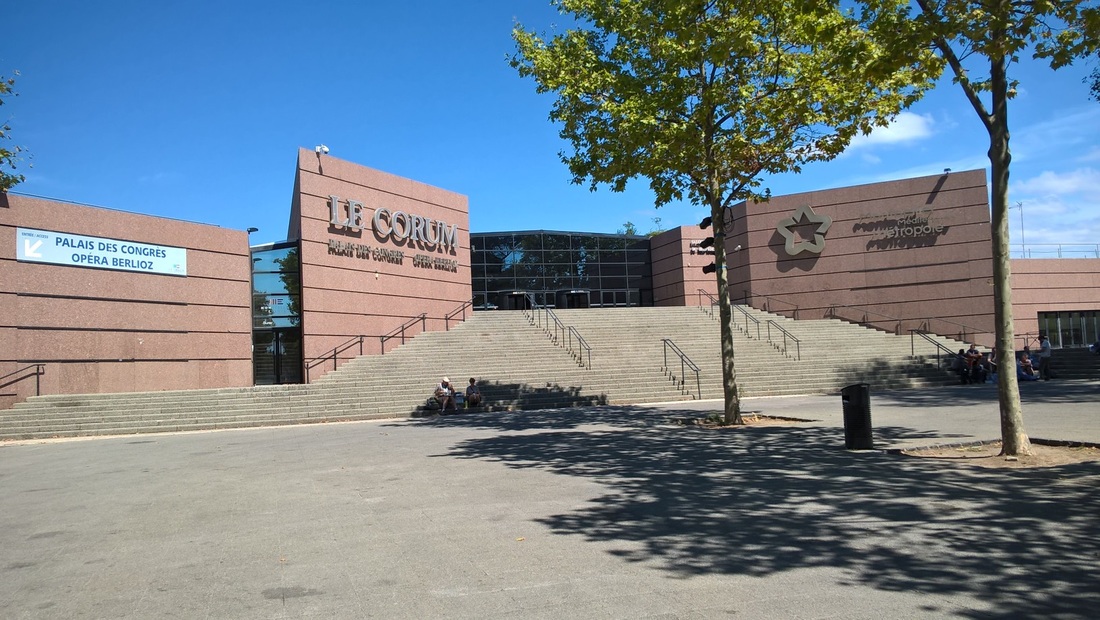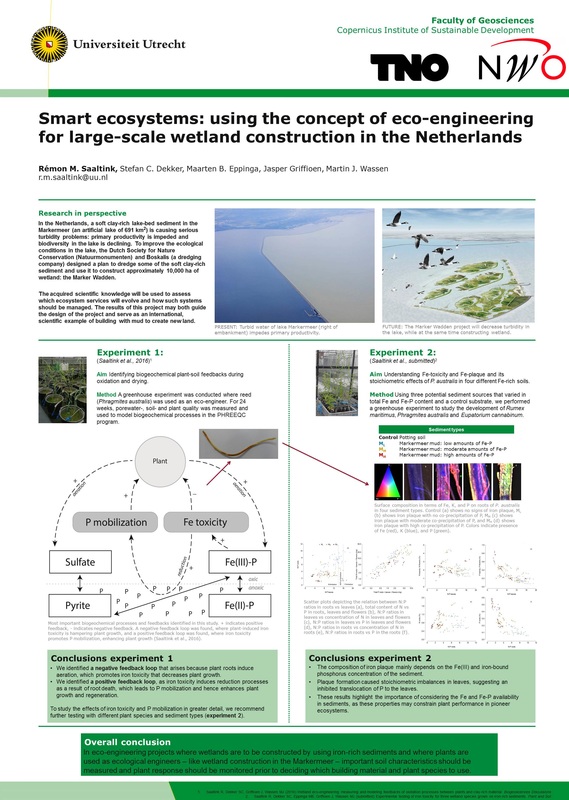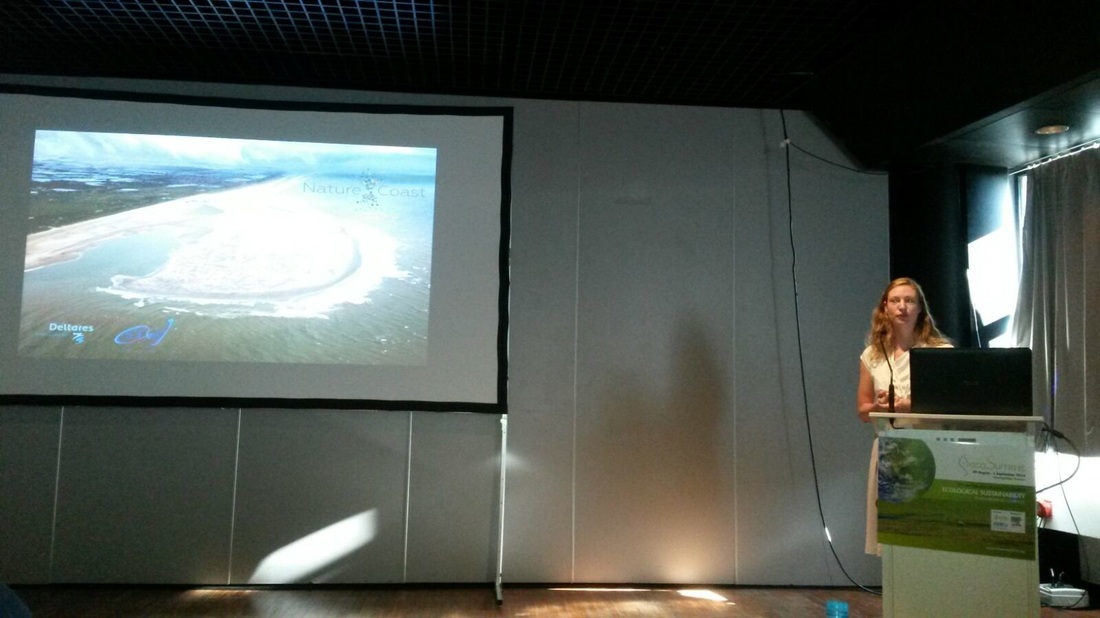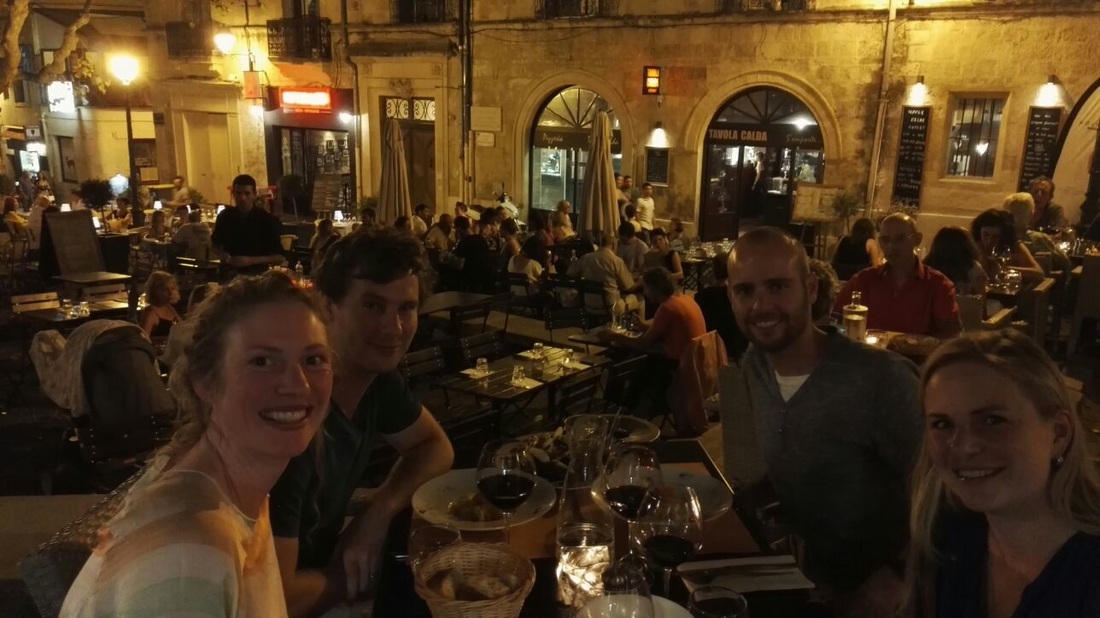| By Rémon Saaltink & Iris Pit As a PhD student you get the opportunity to go to conferences to showcase your research (and also to get a breather from your daily worries in the office; a necessity!). Finally getting out of the lab or office, go abroad, talk to people who inspire you and all will transform in new energy to continue your research. The goal of a conference is to show ongoing or finished research and to network, which may be of great help when finding a new research position like a post-doc. |
Presenting your research at a conference is via a poster presentation or a talk. To be able to get a talk or a poster presentation, the PhD student has to submit an abstract of around 500 words, which needs to be handed in around 4 to 8 months prior to the start of the conference. From experience, ongoing research is more likely to get a poster presentation and a talk may be given when the research is almost finished. However, this is not always the case and a disappointed researcher of not getting a talk is quite common. But hey, you are in Montpellier anyways so you better enjoy your stay in the beautiful city!
Below, two different experiences from two PhD students are described: Iris Pit (who was lucky enough to give a talk) and Rémon Saaltink (who was lucky enough to present a poster that generated lots of interesting discussions).
| Rémon Saaltink When I first heard about the conference – autumn 2015 – I immediately knew I had to subscribe. My research focuses very much on ecological engineering wetlands (see my earlier blog posts about the Marker Wadden), which perfectly fits the theme of the EcoSummit this year: Engineering Change. Actually, a session was organized within this conference titled Ecological Engineering. I wrote an abstract for this specific session and asked for a talk. Months later, somewhere in April, I received a letter that I could present a poster instead. Although this was not what I wanted initially, it ended up quite well as I had lot of interesting discussions with scientists from all over the world. I felt really lucky and received good suggestions. In the end, this is what we’re aiming for when attending a conference. I even received an award for outstanding research poster at the end of the event! |
It was Rémon who pointed out the conference and immediately I was enthusiastic about it. The main theme of the EcoSummit: Ecological sustainability, Engineering change fits perfectly within my project NatureCoast and together with the timing, location and the size of the conference (not too big, not too small) I decided to send an abstract. As my first chapter of my thesis was almost finished at that time, I really wanted to give a talk. So far, I’ve only had a poster presentation and I was curious to see what the difference is with a talk. Besides that, this first chapter was years of work, it deserved at least a 15 min presentation (!) So you can imagine I was very happy to hear that I was chosen to give a talk in the session: Soil and Water Conservation and Restoration: Innovative Engineering tools and New Approaches.
1. It was the last day of the conference, which means that many people are going home (like Rémon did) or are getting tired of going to talks. Especially in the morning when the night before a gala dinner was organized.
2. The first presenter didn’t show up at 9am and the session leader decided to shift the presentations 15 min earlier. My talk was planned at 9.45am but I was rescheduled at 9.30am. So when people walked in to see my presentation at 9.45am, they were too late!
The downside of a presentation is that you will never reach the people that you might reach with a poster presentation because a poster presentation is often 2-4 hours and sometimes even longer. Also, many parallel sessions were taking place, which means that people need to choose and might not go to your presentation. In my case the presentation was not on the scheduled time, which did not help as well. I think around 20-30 people listened to my presentation.
The great part of giving a presentation is that if someone gets enthusiastic about your research, it is serious business. The session leaders turned out to be the most interesting scientists to talk to. Apparently, the professor who accepted my abstract for a talk knew a lot about the methods I used and was able to ask very interesting questions and give comments on my research. A new contact was created! The professor is really interested to see the Sand Engine in the coming year and to talk further about possible post doc positions. You never know, in a few years I might start a post doc in Canada!




 RSS Feed
RSS Feed
